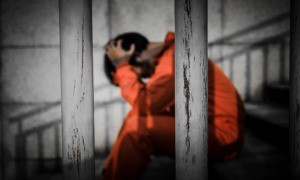President Barack Obama released his spending plan for 2011 today. Advocates in the JJ world, and pretty much every other corner of youth work, will obviously not be ecstatic with the proposed freeze on domestic spending. The funding proposal for OJJDP programs is not even level: this year Obama would spend $290 million, down from a proposed $317 million in 2010.
[For the entire Justice Department budget proposal, click here]Now, the largest difference between Obama’s last proposal and what actually got funded for 2010 was the demonstration projects account: he proposed it be nixed, and it got $91 million from Congress. That is, of course, because the entire pot of money gets raided like a slop trough at lunchtime by earmark-hungry appropriators. The president has zeroed out the demonstration grants again, ditto for the Byrne Discretionary Grants at the Bureau of Justice Assistance (BJA). So we’ll see what happens in Congress. [Here’s our guess: the same thing as last year, earmarks go back in.]
The biggest changes from last year’s proposal to this one are in juvenile mentoring and juvenile accountability block grants (JABG). Obama proposed $45 million for juvenile mentoring, down from $80 million last year, and $40 million for JABG, down from $55 million last year.
That shaves about $50 million out of the 2010 proposal. The president’s plan would recoup about half of that amount as savings, and put the rest of it into a few new JJ programs he is proposing. They include:
–$12 million for gang and youth violence prevention, on top of the $10 million for gang prevention work within Title V funding.
–$13 million on National Juvenile Delinquency Court Improvement to “assist states, territories and Indian tribes in implementing the Key Principles of a Juvenile Delinquency Court of Excellence in their juvenile justice systems.”
Expect the National Council of Juvenile and Family Court Judges to get a fair chunk of the funding for this if it gets appropriated, because the whole “Court of Excellence” concept is the council’s creation.
–$806,000 on a Disproportionate Minority Contact Evaluation/Pilot Program, to “support empirical impact and outcome evaluations of delinquency prevention programs and systems improvement activities, and provide intensive technical assistance to…governments to address the disproportionate number of juvenile members of minority groups who are exposed to the juvenile justice system.”
The DMC proposal is modest in dollar amount. But it must be a good sign for those working on that issue, some of whom were frustrated by the lack of attention paid to the issue in OJJDP’s program plan for 2010.
Other new juvenile-related projects in the Obama budget, most of which would be funded through the Bureau of Justice Assistance:
–$12 million for mental health courts, part of a larger $57 million proposal to fund specialty courts.
–$37 million for Attorney General Eric Holder’s Initiative on Children Exposed to Violence.
–$10 million for Smart Probation, which would give out demonstration grants aimed at helping communities innovate new and better ways to manage adult and juvenile probation caseloads.
–$1 million on a “What Works Repository” that would house information on best practices in juvenile and criminal justice.
–$20 million to help states implement the Adam Walsh Act.
That last one is a doozy. There are a whole bunch of states that appear to be on the fence about complying with the Adam Walsh Act, particularly when it comes to its requirements on sex offender registries (and the subsequent monitoring of people on it).
Some JJ advocates want states not to implement the law for philosophical reasons, because there is great potential for juveniles with a good chance at rehabilitation getting stuck on registries for a long time. States have a much simpler reason: the cost of implementation might be way, way higher than the penalty for not complying (10 percent of its justice assistance grants).
This proposal might alleviate the cost of implementation, and therefore could remove the concern of some states. But $400,000 ($20 million spread across 50 states) seems like a pretty meager incentive if you are a state with a budget deficit and already have trouble maintaining your current sex offender caseload.
Finally, the president includes $100 million again for Second Chance Act programs, which aim to assist adult and juvenile offenders who are returning to the community from incarceration. There is $15 million in the proposal for Second Chance mentoring grants. Two other juvenile-specific carve-outs: $2.5 million for evaluation and improvement of education at prisons, jails, and juvenile facilities, and “$4 million for re-entry programs for juvenile drug offenders.”





























